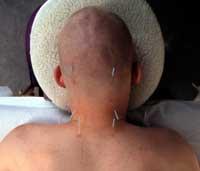Attitudes towards neuroleptic treatments
2015/09/01 Ozamiz Etxebarria, Naiara - Psikologian doktoreMedikuntza eta odontologia fakultateko irakaslea | Guimon Ugartetxea, José - Psikiatrian doktoreEHUko katedradun emeritua | Markez, Iñaki - Psikiatrian doktoreZubiok eta AMSA elkarteetako psikiatra | Ozamiz Ibinarriaga, Jose Agustin - Soziologian doktoreEHUn eta Deustuko Unibertsitatean irakasle aritua Iturria: Elhuyar aldizkaria

Neuroleptics are drugs used in the treatment of psychosis. Changes occur mainly in the brain and, for example, in the case of schizophrenia can reduce hallucinations. There have always been many discussions about the neuroleptics of mental patients for the side effects they produce.
In early 2012, a series of psychiatric patients carried out serious criminal actions in Bilbao, which led to a great debate among mental health professionals. The authors of this article also had a well-documented debate on this topic.
In 1986 we analyzed the attitudes towards neuroleptics in Bizkaia [1]. In 2012, this survey was updated and a new study was conducted to analyze the current situation. Significant differences were detected with respect to the attitudes of neuroleptics and an evolution in prejudices towards them was observed. The data of these studies lead us to make some reflections on neuroleptic treatments.
Use of neuroleptics in dangerous patients with schizophrenia
Psychosis and especially schizophrenia are associated with risk. Therefore, patients affected by this confusion are usually admitted to psychiatric hospitals. However, although the danger of the mentally ill is real, critical situations are not frequent. It is true that aggressive behaviors may be the first sign of psychotic disease, but patients with schizophrenia have no greater propensity to kill than the rest of the population. Only 2% of the murderers suffer from psychosis.
However, the media tend to offer sensationalist information [2], especially if someone with this disease kills someone. When this occurs, it is killed by unforeseen causes, usually by delusions or hallucinations of the disease. On the other hand, the attacks of these patients are much more violent than those of any person, especially schizophrenics.
It should be taken into account that schizophrenic patients who do not receive treatment usually have aggressive behavior. These usually have a low control of the impulses, and sometimes have strong unforeseen alterations. On the other hand, studies indicate that many schizophrenic patients who have killed someone consume toxic substances (illegal drugs and alcohol).
Most of the murders occur at the exit of psychiatric hospitals, so the society sees patients with schizophrenia badly. However, no one speaks of patients discharged in psychiatric hospitals that do not kill anyone.
The media and the citizenry in general put a dangerous “crazy” image on them. It is true that sometimes these patients can be dangerous. Unfortunately, the best indication for predicting risk behaviors is another violent behavior that has occurred previously. On the other hand, risk factors for the appearance of violent behaviors are usually, in general, persecutable hallucinations or delusions, the excessive consumption of certain substances and child abuse. Therefore, if there is a risk of violence, it is usually necessary to provide neuroleptics to these patients. Aggressive patients usually accept this measure because they fear their aggressive impulses and ask for help in not losing control. However, an excess of neuroleptics can make your sedative effect excessive. The position contrary to the side effects of neuroleptics has always existed, but in the last 20 years the prejudices have diminished. However, the criticism remains numerous, and the denunciations of neuroleptics against psychiatric services are numerous. Thus, psychiatrists are in a difficult situation before certain sectors of public opinion.
Comparison between both investigations
In a study carried out in 1986 between four hundred patients who were going to the primary care doctor in Getxo, we found a negative attitude towards the use of psychodrugs [1]. The main results of this research are:

• In general, women trusted less than men in psychoactive substances.
• Negative attitudes towards psychoactive substances increased with age and older people preferred natural medicines.
• The higher the social status, the lower the fear of psychoactive substances.
• The more conservative people are, the more I appeal to psycho-drugs.
• Patients had the most severe symptoms favorable to psycho-drugs and less fearful of their side effects.
It should be noted that neuroleptics have evolved a lot in recent years. The results of a study in Cochrán show that they are effective and safe for schizophrenic patients and serve to prevent schizophrenia. Thus, in general, psychiatrists, nurses and patients show a positive attitude towards these psycho-drugs.
After the deaths caused by psychiatric patients in Bilbao in early 2012, the authors of this study decided to carry out a new study on the current situation.
The study was carried out with two hundred medical students of the UPV/EHU, in order to analyze the attitudes towards psychoactive and neuroleptic substances and compare them with the results obtained in 1986. The results are:
• We observed significant differences in attitudes towards neuroleptics, from one population to another, observing an evolution in regard to prejudices.
• In two studies we detected a factor we call “naturist”, that is, there are people who consider that natural resources are better than neuroleptics, because the first have no side effects.
• In both studies, women showed less confidence than men in neuroleptics.
• In general, neuroleptics are considered necessary, under control.

Pharmacological treatment: problems
In general, there is a close relationship between the compliance of the treatment and the attitude of the patients to the medication. In the Department of Psychiatry of the University Hospital of Geneva, a study with 324 patients was carried out in 1999 in order to analyze attitudes towards psychoactive medications [3]. In the study, it was observed that the negative attitude towards psychoactive medications was related to the non-continuity of treatment. The non-continuity of treatment was not considered an irrational attitude, but a rational decision based on the following factors:
• Lack of faith in patients regarding the use and effectiveness of the medication.
• Perception that the disadvantages are more than benefits, such as the cost and discomfort that can cause.
• Lack of family and social support.
The Geneva research corroborated years earlier (1993) the conclusion of a work by Angermeyer and Matschinger in Germany [4]: if it considers that the therapy is effective, the patient follows the treatment better, while if the patient has doubts about the efficacy of the treatment (because it questions the psychiatric knowledge) does not follow the treatment correctly.
To conclude, Goerge and his collaborators concluded another study carried out in 1990 at the University Hospital of Geneva [5]: If the values of the patient and psychiatric institution do not coincide with attitudes towards problems, patients and therapists have different expectations. However, there are patients who, despite not coinciding with the values, continue treatment for various reasons: conformity, dependence, pressure…
Proposal to promote positive attitudes towards neuroleptics
In 1999, Eguiluze, a psychiatrist at the Cruces Hospital and a professor at the University of the Basque Country, carried out a study on the evolution of schizophrenic patients who participated in a group to promote positive attitudes towards neuroleptic drugs [6]. The results of the research were compared with a control group and it was observed that the experimental group improved the degree of follow-up of pharmacological treatment and the symptoms of patients. Later, in an investigation carried out by the director of the psychiatric service of Basurto, Miguel Ángel González Torres and Eguiluz, in similar techniques, they observed that the patients who attended the psychoeducation teams had less income than those of the control group.
Consequently, we consider that the creation of educational programs and the implementation of informative campaigns can contribute to changing attitudes towards psychopharmacological substances.
Bibliography Bibliography Bibliography

Gai honi buruzko eduki gehiago
Elhuyarrek garatutako teknologia




